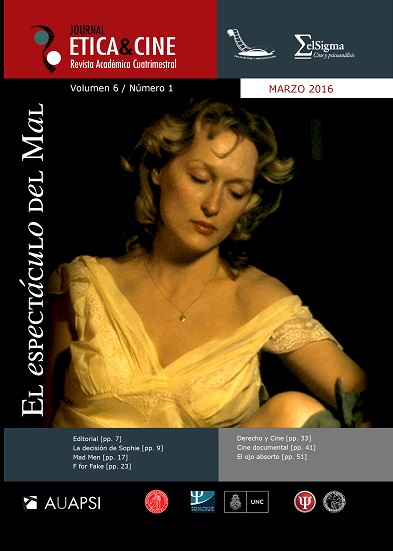The charm of the forger
DOI:
https://doi.org/10.31056/2250.5415.v6.n1.14858Keywords:
Visual Arts, falsification, tekhné, artistAbstract
Despite the confusing yet attractive name of “false documentary” to describe the cinematographic modality with which Orson Welles’s F for Fake (1974) inaugurated an era, his unstoppable recurrence to such distinctive and diverse concepts such as false, falsification, fraud, magic and even truth and lies (both added to the title of the French and Spanish version of the documentary) are not central to this work. Neither is the documentary as discourse, or other important notions. What is at the center of this article is one of the topics Welles addresses in his last work: falsification and the falsifier. The latter will be analyzed in relation to the famous person with whom he confronts – the artist, with a double object. In the first place, the purpose is to examine the work in Visual Arts, as modern and contemporary art in its diverse disciplines and languages have done none other than make evident the diversity and extension of operational and productive modes that very often question every specificity of the artistic work. And in second place, the aim is to demonstrate how, apart from showing the high standing of the figure of artist, the falsifier hides a fundamental paradox: it questions the statute of the artist as creator but its existence depends on keeping that statute aliveReferences
Benjamin, W. (1931, 2004), “La obra de arte en la era de su reproductibilidad técnica”, en Sobre la fotografía. Valencia, Pre-textos.
Dubois, P. (2002), “Máquinas de imagen: una cuestión de línea general”, en Video, Cine, Godard, Buenos Aires: Libros del Rojas (UBA).
Genette, G. (1997), La obra del arte, Barcelona, Lumen.
Ginzburg, C. “Indicios”, en Mitos, emblemas, indicios, Barcelona: Gedisa.
Heinich, N. (1996), Étre artiste, París: Klincksieck.
Koldobsky, D. (2003), “Escenas de una lucha estilística. La memoria del arte argentino en la prensa gráfica de los sesenta”, Figuraciones no1/2- Ärea transdepartamental de Crítica de Artes (IUNA), Buenos Aires: Asunto impreso.
Koldobsky, D. (2003) “La figura de artista cuando se decreta su muerte”, Informe final de la beca de Formación Superior en la investigación, UNLP.
Schaeffer, J. M. y Flahault, F. (1996), “La création”. Revista Communications. París, Seuil.
Steimberg, O. (1989), “En la línea de los discursos interrumpidos”, en Steimberg, O. y Traversa, O: Estilo de época y comunicación mediática. Buenos Aires: Atuel, 1996.
Downloads
Published
Issue
Section
License
Los autores que publiquen en Ética y Cine Journal aceptan las siguientes condiciones:
Los autores/as conservan los derechos de autor © y permiten la publicación a Ética y Cine Journal, bajo licencia CC BY-SA / Reconocimiento - Reconocimiento-CompartirIgual 4.0 Internacional. La adopción de esta licencia permite copiar, redistribuir, comunicar públicamente la obra, reconociendo los créditos de la misma, y construir sobre el material publicado, debiendo otorgar el crédito apropiado a través de un enlace a la licencia e indicando si se realizaron cambios.

Este obra está bajo una licencia de Creative Commons Reconocimiento-CompartirIgual 4.0 Internacional.




